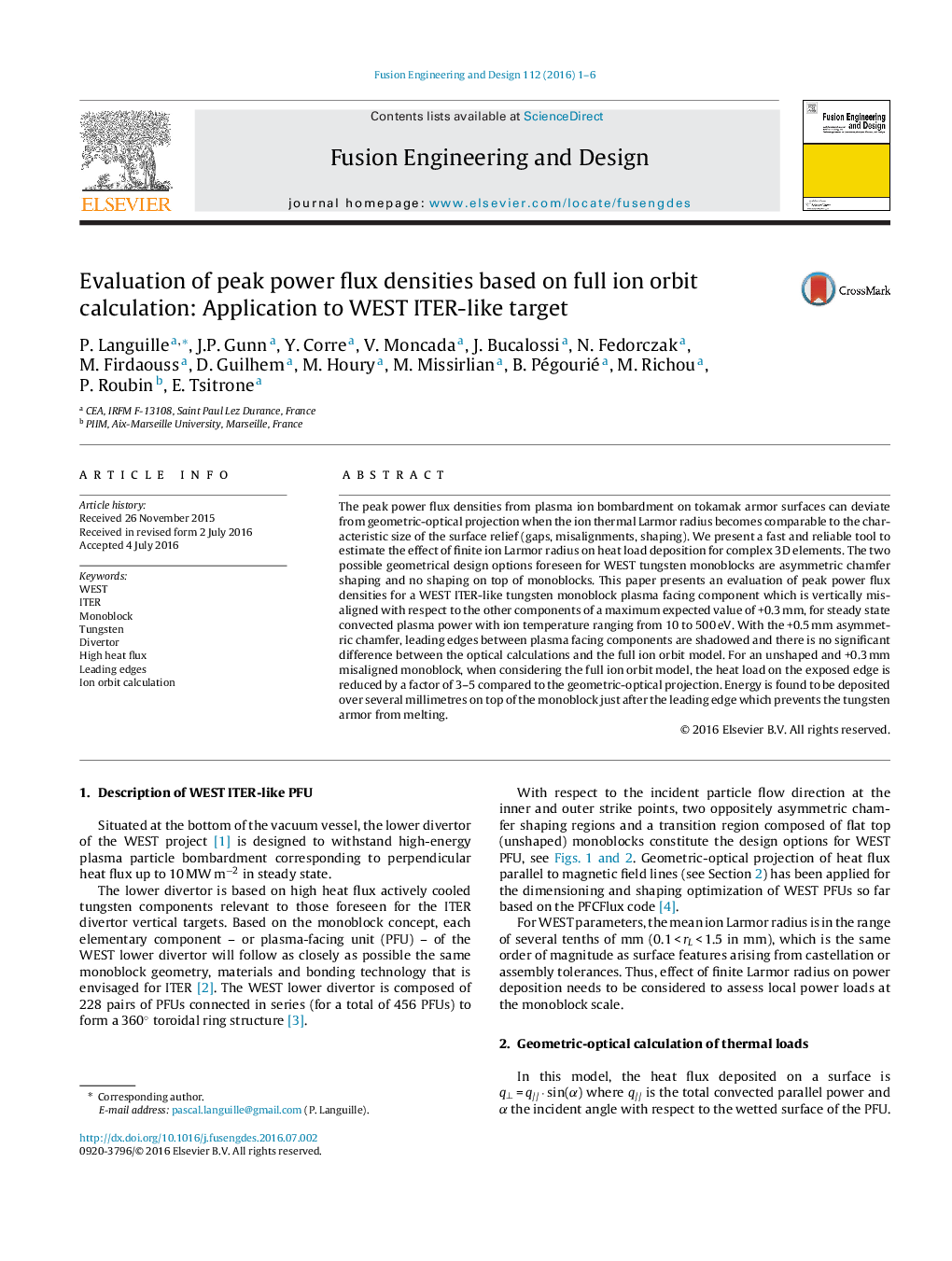| Article ID | Journal | Published Year | Pages | File Type |
|---|---|---|---|---|
| 270833 | Fusion Engineering and Design | 2016 | 6 Pages |
The peak power flux densities from plasma ion bombardment on tokamak armor surfaces can deviate from geometric-optical projection when the ion thermal Larmor radius becomes comparable to the characteristic size of the surface relief (gaps, misalignments, shaping). We present a fast and reliable tool to estimate the effect of finite ion Larmor radius on heat load deposition for complex 3D elements. The two possible geometrical design options foreseen for WEST tungsten monoblocks are asymmetric chamfer shaping and no shaping on top of monoblocks. This paper presents an evaluation of peak power flux densities for a WEST ITER-like tungsten monoblock plasma facing component which is vertically misaligned with respect to the other components of a maximum expected value of +0.3 mm, for steady state convected plasma power with ion temperature ranging from 10 to 500 eV. With the +0.5 mm asymmetric chamfer, leading edges between plasma facing components are shadowed and there is no significant difference between the optical calculations and the full ion orbit model. For an unshaped and +0.3 mm misaligned monoblock, when considering the full ion orbit model, the heat load on the exposed edge is reduced by a factor of 3–5 compared to the geometric-optical projection. Energy is found to be deposited over several millimetres on top of the monoblock just after the leading edge which prevents the tungsten armor from melting.
